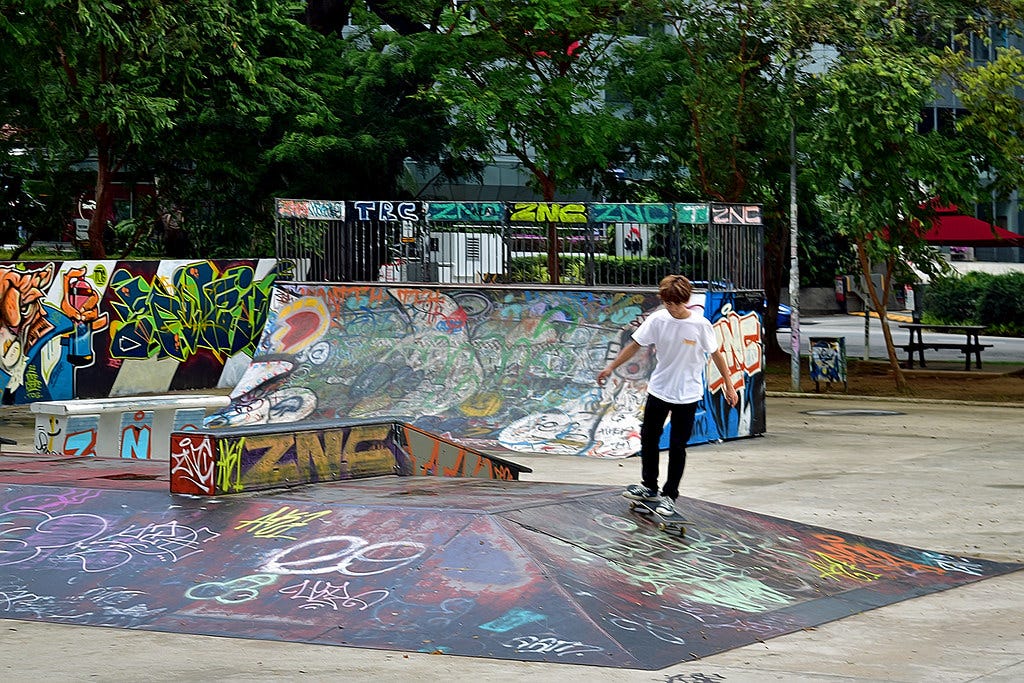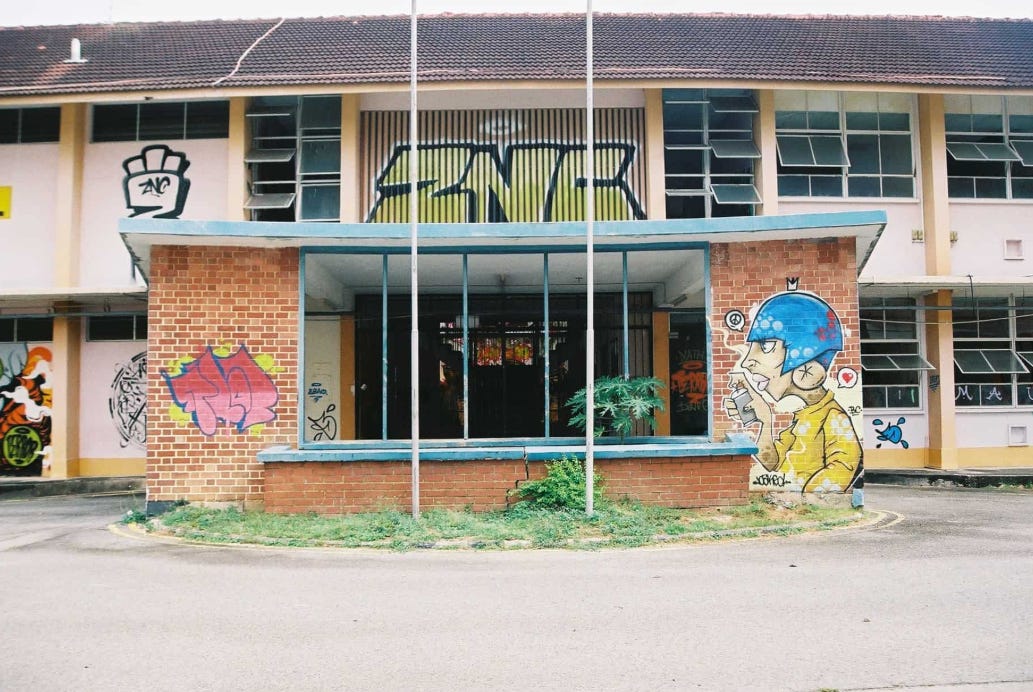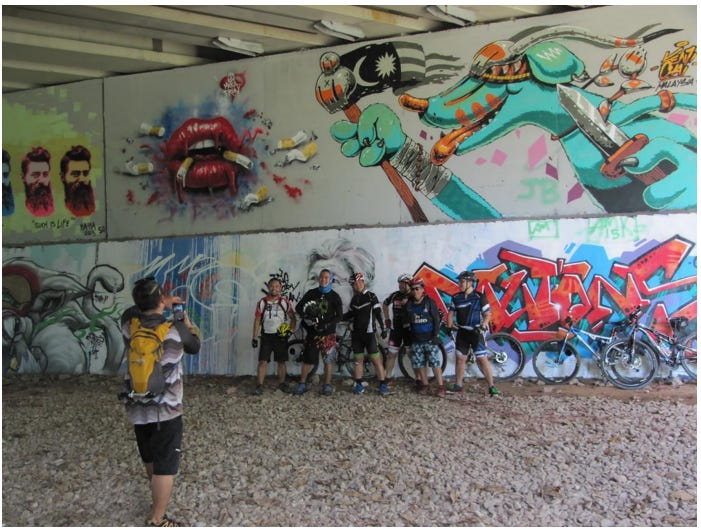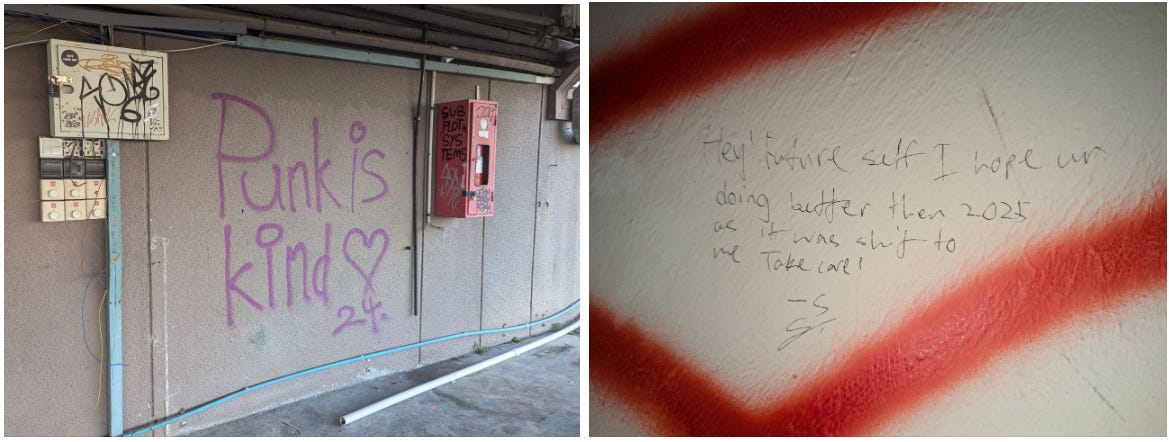Part 1: History of Singapore's Arts Development and the Criminalisation of Graffiti
Part 2: Graffiti and Activism in Singapore
Part 3: The Co-opting and Taming of Graffiti by the State
Graffiti and the People
So what now?
With how effectively the government has managed to curtail the transgressiveness of graffiti, the future for it seems quite bleak – even with increasing government support and public recognition, the government continues its clamp down on unsanctioned graffiti pieces while criminalising works of street art that run counter to its interests.
How do artists respond when such restrictions clash with their desire for self expression and advocacy? How much of graffiti is still graffiti in the sense of its roots? And what does the future hold for graffiti in Singapore?
Artists and Graffiti
For artists, many feel that the legalisation of graffiti might constrain them in restricting where and how they are allowed to create art. In his paper, T.C. Chang notes that graffiti writers are concerned with how legal walls, while providing a space for artists to practice, also constrain their creativity and expression.
Artists, and graffiti artists in particular, are greatly concerned with the process of creation and artistic freedom. Because the subversive qualities of graffiti come from its illicit nature, the illicit process through which a graffiti intervention is performed often holds more significance than the final work itself.
Legal walls are the complete antithesis to this, as apart from removing the illegality central to a graffiti intervention, they also impose the state’s vision of design onto the artist, emphasising the visual aesthetics of the end result. It is deliberate that the six legal walls in Singapore are located in skateparks, parks, and areas designated for youths and arts. Graffiti in those areas contribute to the visual aesthetics of the place, and hence is deemed acceptable to the state.
In the words of an artist interviewed by Chang,
“...if it is sanctioned, you become a designer… You are basically doing something visual for another person’s specific goals and not your ends… Once you try to designate a public space for it to be just beautified, there is no intervention at all, and you fall right into the agenda of another person’s design of the space”
The creation of graffiti pieces on those legal walls, far from being interventions, are more of collaborations instead. There, the artist becomes a vehicle of the state, helping it impose its aesthetic vision on the built environment.
While some artists view this legalisation of graffiti with distaste, other artists and collectives – like RSCLS who helped the URA oversee street art on the Rail Corridor – choose instead to cooperate with the government.
Graffiti is an art after all, and like all other arts in Singapore, it is exceedingly difficult for the graffiti scene to grow and flourish without support from the state. Without spaces to practice and without platforms for artists to showcase their works, the graffiti scene will at best remain a niche subculture in the local arts industry.
Thus, many see collaboration with the state as essential in securing the future of the local street art scene, viewing the compromise on artist’s freedom of expression as a necessary evil to be endured.
In the words of RSCLS’ Director in an interview with Chang,
“When they [young writers today] started, they already had some legal walls to paint on. Whereas I personally had to fight for that, because I realise if I don’t get some kind of actual spaces for people to paint, then the scene will eventually die out.”
It should be noted though that the power dynamic between the state and artists is not entirely imbalanced – just as much as the graffiti scene needs state support to grow, the state also wants graffiti as a crucial part of its “Global City of the Arts” vision.
For instance, a good number of practice spaces have come about as a result of negotiations between RSCLS and the National Arts Council (NAC). The Rail Corridor initiative for instance came as a result of RSCLS bringing up the issue of a lack of practices spaces in Singapore, and when it closed for development in 2016, more negotiations between RSCLS and the NAC led to a former student hostel at 369 Tanjong Katong Road being opened up for graffiti artists to use (closed in Feb 2018).
Concessions like these from the government, even if they still come with their own sets of rules and restrictions, are still significant in establishing graffiti as an increasingly permanent part of Singapore’s art industry. The negotiating power of artists will only continue to grow with the graffiti scene, and with enough time may become significant enough to pressure the government into letting up some of its oppressive censorship.
Graffiti as Art
Another important question with the legalisation of graffiti is how it affects the nature of the artform. As established, graffiti derives much of its subversive force from its illegality, so with graffiti now legalised, is state sanctioned graffiti now disconnected from its political roots and meaningless as a form of protest?
I think that saying so would be taking too narrow a view of graffiti. Even without the illegality of the process, graffiti still remains a form of spatial art, which is inherently political and still retains its potential to reshape our urban environment.
It is true that what forms of art can be expressed on public walls are greatly restricted – in an email interview with Chang, the NAC replied that artists on legal walls are not allowed to:
Advocate lifestyles seen as objectionable by the general public
Denigrate a person, group or class of individuals on the basis of race or religion, or create conflict in our multicultural society
Undermine the authority of the government and public institutions, or threaten the nation’s security
However, these regulations are not necessarily followed to a rule. Despite smoking being one of those behaviors potentially being deemed objectionable to the public, in some photos of the rail corridor before its renovation in 2016, murals depicting cigarettes can be observed.
In another of Chang’s interviews, this time with a URA officer regarding the permissibility of murals on shophouses in historic neighbourhoods, the officer said that:
“Sometimes we just close one eye… so long as the owners are okay and we don't get any complaints from the public, it is okay”
It appears that with street murals and graffiti, how the public perceives the artworks plays a significant role in the government’s stance, giving some wiggle room for artists to challenge certain stances of the government through the public appeal of their artworks.
More recently, despite homosexuality still being deemed as an undesirable lifestyle by the government, in response with full marriage equality constitutionally blocked in 2022, Sam Lo was able to paint their mural “Longing” behind Aliwal Arts Center in June 2023 for Pride Month. Depicting a pair of lovebirds huddling together as arrows hit them, the artwork juxtaposes queer love and pain, representing the experiences of many queer couples and families simply seeking to live whole lives in Singapore.
As these artworks show, just because graffiti is now legal does not mean it loses all its capacity as a means of political process. It is after all, still art, and can be used to advance causes and challenge societal norms. Most crucially, graffiti still retains its nature as an urban artform with the potential to transform our spatial environment, instead of being limited to appearances in art galleries. While the legal walls and approval processes in place restrict direct political challenges to the state, artworks like the above still retain their potential to engage and challenge the views of the unsuspecting public, who will go on to shift the state’s views of culture and permissibility.
Conclusion
So we arrive at the final question: what does the future hold for graffiti?
For graffiti’s role in the arts scene, the future seems hopeful. Graffiti will almost certainly remain permissible as the government seeks to further increase Singapore’s cultural appeal, and many new artists will keep receiving opportunities to grow their craft under programs like SCAPE’s street art residency.
For its function as a form of protest for the marginalised and disenfranchised however, it seems a lot more bleak. Even though graffiti still retains some of its political properties as an urban art form, as public perception of it shifts from haphazard writings on walls to intricate murals by seasoned artists, it will only become easier to disconnect the medium from its haphazard political roots.
It's easy to mock spectacles of graffiti writers getting arrested for comparatively simplistic writings, like the man arrested for writing “ISD BIG BULLY” on the walls of Chong Pang Neighbourhood Police Post, or the teens caught for writing “FUCK THE PAP” on a HDB rooftop in Toa Payoh, but we must keep in mind that these instances of graffiti are what represent the very roots of the beautiful murals we see today. The spectacle of shame these writers are put through is a deliberate one meant to discredit their acts of protest, and something we must keep in mind as the local graffiti scene grows.
As the graffiti scene grows, its accessibility also starts becoming an issue. Seasoned artists can use leftover supplies from commissioned works for personal projects, but for new artists starting graffiti, with good cans of spray paints costs upwards of $10, it can be quite expensive as a hobby. Add that to the preparation process (out of courtesy) to paint on legal walls – painting over the previous artwork and applying primer (called buffing) – the approval processes for works in other areas, and graffiti can become quite a restrictive medium for hobbyists to pick up. This once more moves graffiti further away from its roots as a means of struggle for marginalised youths to a medium only those with the financial means to support their craft can take a stake in.
In some sense, these effects can be seen as inevitable consequences in graffiti’s shift from a counterculture movement into a more mainstream art. We observe similar trends when political movements like Black Lives Matter or social movements like autism acceptance move into the purview of mainstream media – they become co-opted into an aesthetic to be endlessly reproduced in algorithmically reinforced echo chambers online, with posting taking the place of action and their initial values misrepresented or diluted. While this does not make them meaningless – more awareness is still a good thing – it is still frustrating for their initial adopters as they watch their once fiery movement burn into benign embers for the masses.
Graffiti in Singapore faces this fate right now. The opinions of artists on this are divided – some are frustrated with how going mainstream has taken much away from graffiti’s incendiary roots, but many also think that with the extent of state suppression and policing, graffiti would never have stood much chance as a countercultural movement in the first place.
It’s not my place to make a judgement on this, but I will say that at least for our illegal graffiti culture, it still lives. Away from the public eye, and outside of the long reach of the state, illegal graffiti can be found aplenty in back alleys, abandoned buildings, and even old unused stairwells.
While a lot of crude humour and writings can be found on those walls, there are also the occasional gems of art, messages of kindness, and rare moments of vulnerability from those who have nowhere else to turn to. Graffiti, like any other form of art, can be at once inappropriate and rebellious, kind and loving, and confessional.
To me, graffiti is beautiful and personal. Not just those big commissioned murals, but also the scrawlings in little forgotten corners of our country. In a world hellbent on reducing us to dollars and numbers, a simple graffiti piece to assert your existence means more than ever.
These tags we see are proof of the people that live in Singapore, representing the myriad of diverse stories and lives around us – lives that have somehow converged together in the writings of these once blank walls.
END.
Closing Thoughts
Wow this was quite a difficult article to write. Graffiti is not a topic I was familiar with prior to writing this article, and it takes on quite a different tact from my previous articles on the death penalty. I don't know how good this article is objectively, but I’m proud of myself for having dared to try writing this and persisting till the end.
In this article I tried to focus on the links between graffiti and politics / activism, but I think there's so much more that can be written on it. Some possible future ideas I may or may not write include
Examining the intersection between graffiti, capitalism, and space – public advertisements are a great evil destroying our spaces, but they’re also a form of legal graffiti if you think about it + graffiti itself is often used as a form of advertisement nowadays.
Graffiti as a tool for writing the national narrative – examination and close analysis of state commissioned graffiti works in culturally significant areas / for important events (e.g. SG50)
I hope this article was insightful and fun to read through!! Graffiti is quite an unknown subculture for most people, so I hope this article will be useful in introducing people to its history and significance in SG, and maybe even inspire some to get involved with the scene.
Academic Works Referenced (hope I did citations right):
Chang, T. C. (2018). Writing on the Wall: Street Art in Graffiti-free Singapore. International Journal of Urban and Regional Research, 43(6), 1046-1063. https://doi.org/10.1111/1468-2427.12653
Chang, T. C. (2020). Wall dressed up: Graffiti and street art in Singapore. City, Culture and Society, 20. https://doi.org/10.1016/j.ccs.2019.100329.
Koh, Z. Q. Spacing Beyond the Lines: Graffiti's Place in the Singapore City State.
Lee, T. (2014). ‘Inculcating’ creativity: culture as public pedagogy in Singapore. Discourse: Studies in the Cultural Politics of Education, 35(5), 718–732. https://doi.org/10.1080/01596306.2014.921992
Wood, S. (2020). Making Space: Singapore, Artists & Art in the Public Realm. The Journal of Public Space, 5(4), 137–154. https://doi.org/10.32891/jps.v5i4.1408









